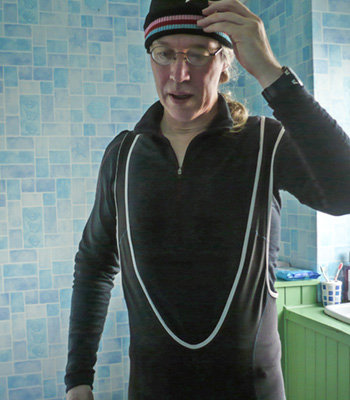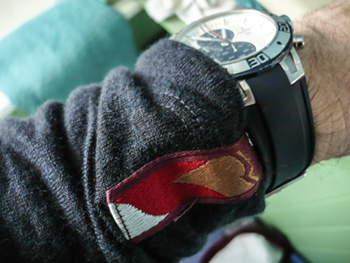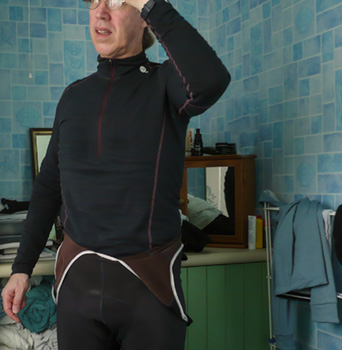
..........................................................................................................................................................................................................
kora shola yak wool baselayer

i'd be very inclined to refer to a yak simply as a hairy beast or at best, an animal. however, it has been pointed out to me that the yak comes under the heading of bovids; cloven-hoofed ruminants, apparently in the same class as cows, deer, sheep and the like. this particular bovid is, by definition, almost always associated with tibet and the himalayas, though also herding as far north as mongolia and russia. contrary to my misapprehension, the majority of yaks do not roam wild, threatening the peripatetic inhabitants of these north eastern plains. there is a small population of wild beasts, but the majority are domesticated. the name yak is derived from the tibetan gyag, and though in their language this refers specifically to the male of the species, western civilisation has lazily adopted the word to refer to both.

the largest of their particular genus, the wild version can grow to over seven feet tall and weigh as much as a metric tonne. not the sort of animal you'd like to meet in a dark tibetan alley. the domesticated herds are considerably smaller, weighing around half as much, though still large enough to offer doubts as to whether to shoo them out the way. intriguingly, it's a type of animal that has a reputation of being somewhat on the aromatic side, yet both animals and their poop have little or no detectable odour. their wool, which is pretty much germaine to this particular discussion, is naturally odour resistant.
and that is a good thing.

while we have endured, and in some cases, still do so, the synthetic baselayer for keeping us warm during our athletic ministrations, man-made fibres have pretty much proved to be rather smelly in even short periods of use. one or two manufacturers have incorporated pure silver threads into their polyester fabrics to minimise this aspect, but with varying degrees of success. none that i have tried could be said to have been entirely triumphant in this respect. many of us are therefore more than grateful for the benefits of natural merino wool, both for the silkier feel and obstinate refusal to become niffy in prolonged use. a close look at the fibres of merino shows a complete absence of anywhere for the bacteria that causes niffyness to abide. thankfully.
merino wool has become almost ubiquitous in its use nowadays throughout several cycle clothing ranges, much of it originating from new zealand. however, a quick look at lord of the rings and the hobbit movies will demonstrate that new zealand contains one or two regions that seem a tad on the cold side, i've no real idea as to whether those areas are inhabited by merino sheep. i tend to think not. yaks, however, indisputably meander about some of the coldest regions of the earth, with only their wool to keep them warm.

putting two and two together, it seems only reasonable to assume that if that wool keeps yaks warm and toasty, it could, perchance, perform the same service to the average over-wintering cyclist.
though not specifically aimed at the cyclist, kora, purveyors of the finest yak wool baselayers, offer (at present) a minimal range consisting of zipped tops and leggings, though it seems likely that the latter would be pertinent only to cyclists in regions inhabited by the yak itself. the top, however, is not only verging on being too stylish to hide beneath a cycle jersey, but seriously vying as the next big thing to keep cyclists warm in winter. according to kora's own statistics, yak wool is up to 40% warmer than merino, yet my own experience on a day that could only be described as temperate rather than chilly, proved it to be just as adept at maintaining a comfortable and desirable body temperature.

though there is only the long-sleeve version available at present, allied to a half-length front zip and high collar, worn beneath a short sleeve sportwool jersey and waterproof jacket, i doubt i was ever in danger of overheating at any time during my velocipedinal exertions. unsurprisingly, kora are keen to make comparisons with that of merino, and it seems that, in terms of breathability, yak wool has 66% greater air permeability than its new zealand counterpart.
percentages, however, are very hard to quantify from behind the handlebars; it pretty much comes down to whether it works or whether it doesn't. in my opinion, it achieves everything promised by the manufacturer and then some. considering the fabric in the shola baselayer seemed a smidgeon more substantial than the average winter edition, there's no real suprise that it easily mastered the cosy bit of the equation, but more than impressive that overheating remained merely a distant concept.
prices are a bit higher than those commanded by merino, (the shola retails at £105) but it would be hard to deny that farming yaks is likely a bit more strenuous than cossetting several thousand sheep in a great big field. i'd be more than intrigued to see kora produce a thinner, short-sleeve version for summer wear, as i fear the long-sleeve baselayer would be rather stifling even in a scottish summer, despite the statistical claims of the manufacturer. however, if you're a fan of merino, or sad enough to be still clad in polyester, you might be happy to join the vanguard of odourless winter toastiness with a covering of yak wool.
it just gets better and better.
the kora yak wool baselayer is available in blue only and in sizes small to extra large at a cost of £105. the women's version, is similarly specified.
saturday 14 december 2013
 ..........................................................................................................................................................................................................
..........................................................................................................................................................................................................